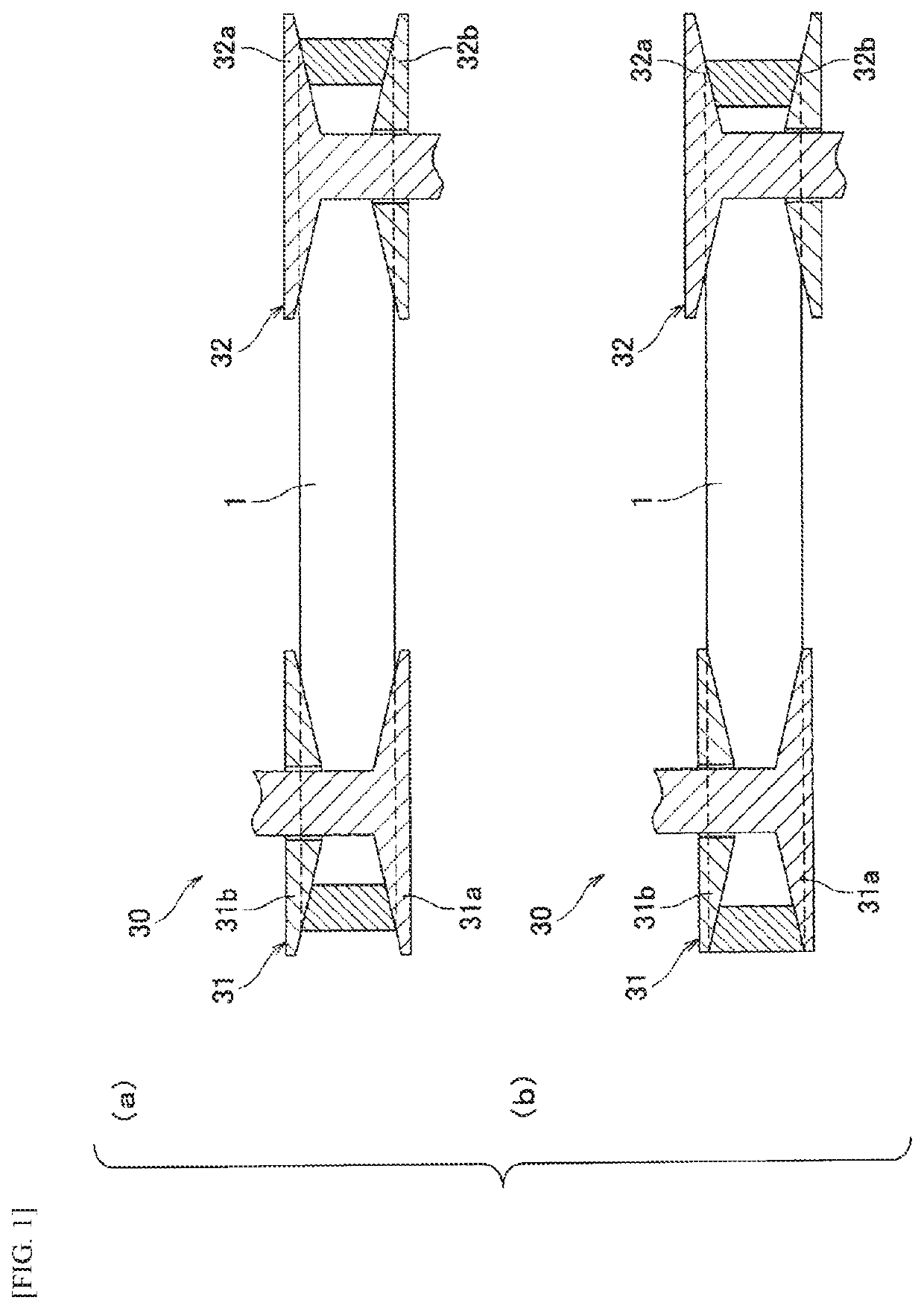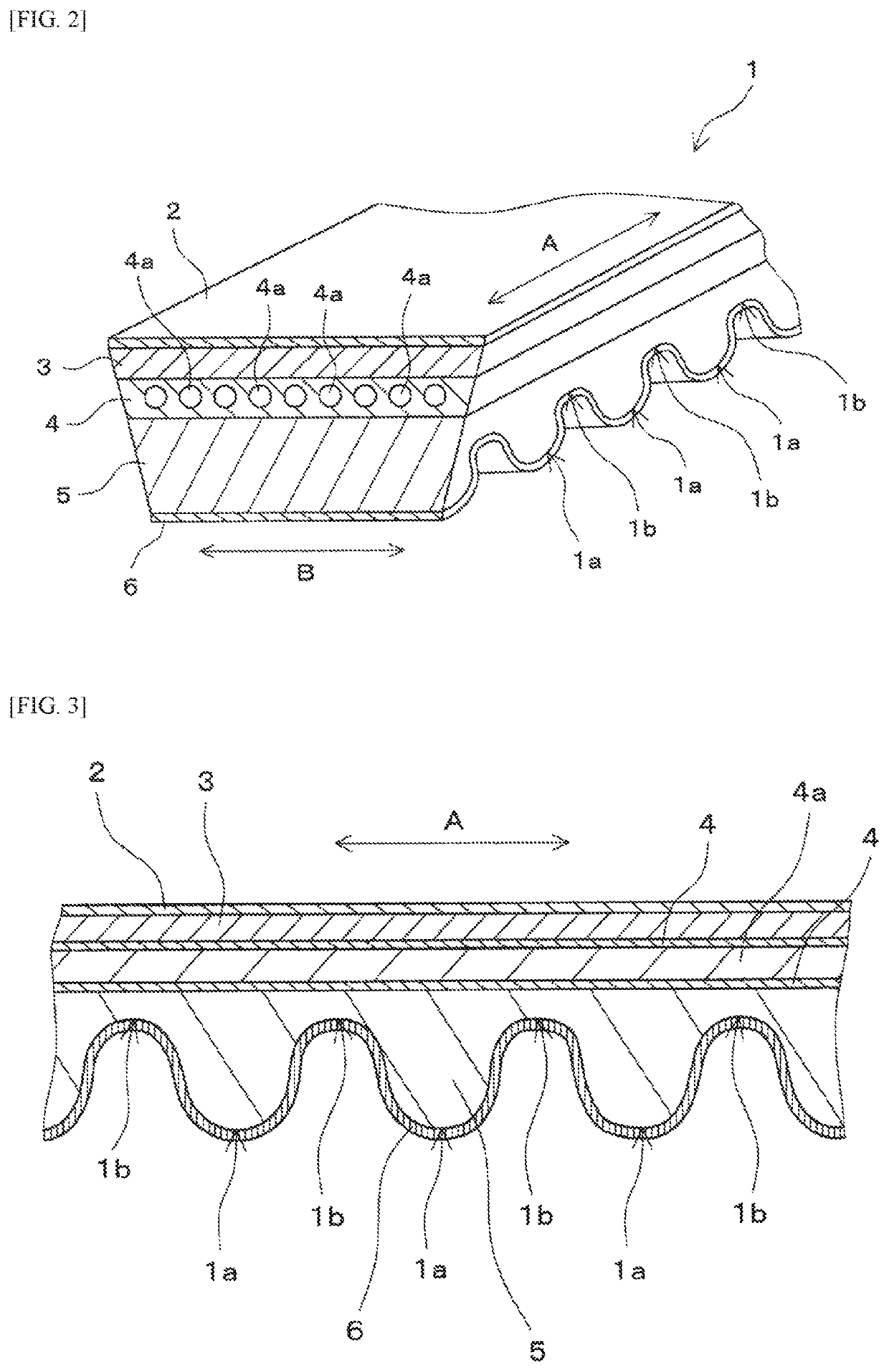Friction drive belt
a technology of friction drive belt and friction drive, which is applied in the direction of driving belt, v-belt, mechanical equipment, etc., can solve the problems of reducing durability (life), bending fatigue resistance, and relatively low mechanical characteristics of rubber composition, so as to reduce friction coefficient of adhesion rubber layer, reduce mechanical characteristics, and improve power transmission efficiency. effect of power transmission efficiency
- Summary
- Abstract
- Description
- Claims
- Application Information
AI Technical Summary
Benefits of technology
Problems solved by technology
Method used
Image
Examples
example
[0102]Hereinafter, the present invention will be described in more detail based on Examples, but the present invention is not limited to these Examples. In the following Examples, the raw materials used in Examples, the measurement methods or the evaluation methods for each physical property are explained below. Unless otherwise specified, “parts” and “%” are on a mass basis.
[0103]Chloroprene rubber: “R22” manufactured by Tosoh Corporation
[0104]Aramid short fiber: “Conex Short Fiber” manufactured by Teijin Techno Products Co., Ltd., average fiber length of 3 mm, average fiber diameter of 14 μm, and short fibers having been subjected to an adhesion treatment with RFL liquid (2.6 parts of resorcinol, 1.4 parts of 37% formalin, 17.2 parts of vinyl pyridine-styrene-butadiene copolymer latex (manufactured by Zeon Corporation), 78.8 parts of water), and having an adhesion rate of 6% by mass of solid matter
[0105]Carbon black: “Seast 3” manufactured by Tokai Carbon Co., Ltd.
[0...
PUM
| Property | Measurement | Unit |
|---|---|---|
| diameter | aaaaa | aaaaa |
| diameter | aaaaa | aaaaa |
| length | aaaaa | aaaaa |
Abstract
Description
Claims
Application Information
 Login to View More
Login to View More - R&D
- Intellectual Property
- Life Sciences
- Materials
- Tech Scout
- Unparalleled Data Quality
- Higher Quality Content
- 60% Fewer Hallucinations
Browse by: Latest US Patents, China's latest patents, Technical Efficacy Thesaurus, Application Domain, Technology Topic, Popular Technical Reports.
© 2025 PatSnap. All rights reserved.Legal|Privacy policy|Modern Slavery Act Transparency Statement|Sitemap|About US| Contact US: help@patsnap.com



